Rabbits are sometimes perceived to be quiet, boring, low-maintenance pets – and not thought of as part of the family as a dog or cat might be.
But rabbits are so much more than that.
They’re surprisingly complex creatures (with personalities and emotions). If you’ve never had the chance to understand rabbits, then you’ve come to the right place to see 20 common myths challenged and explained!
20 Rabbit Myths
Myth #1: Rabbits Have Short Life Spans
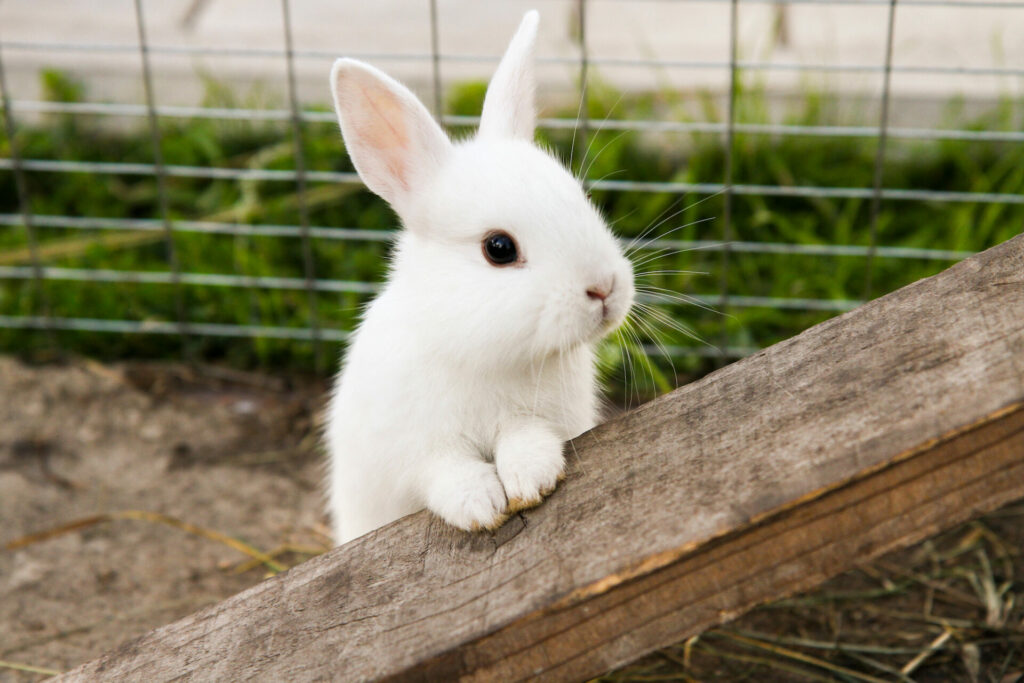
It’s a common misconception that rabbits (like other small mammals) have short lives. Getting a pet rabbit is a big commitment, just like getting a dog or a cat would be.
You might be surprised to learn that domesticated rabbits can live for around eight to twelve years. This is affected by a wide range of reasons – the breed, where they live, diet, exercise, if they’ve been neutered, how much fun and socialization they get, and also if they regularly have check-ups with a vet.
The only truth to the myth is that wild rabbits usually have a lifespan of one to two years, but this is due to diseases, predators, and limited resources.
Myth #2: Rabbits Are Cuddly

Rabbits are not natural cuddlers.
As prey animals, they usually don’t like being restrained and picked up off the ground.
Of course, rabbits that have been handled from a young age will be far more tolerant of being held. But that can vary based on the individual rabbit’s personality. If you bond with your rabbit and build trust, they’re more likely to allow you to hold and cuddle them.
You should make sure that you hold them properly and pay attention to them, including letting them go when they’re panicking and wanting to be put down. Rabbits can start kicking and biting if they feel trapped. They can also try to escape, which is problematic if you’re standing up as a fall can injure them.
When holding your rabbit, don’t squeeze them too tightly and limit your time holding them. They might only tolerate being held for so long. You’ll have to build it up slowly.
Myth #3: You Should Just Get One Rabbit
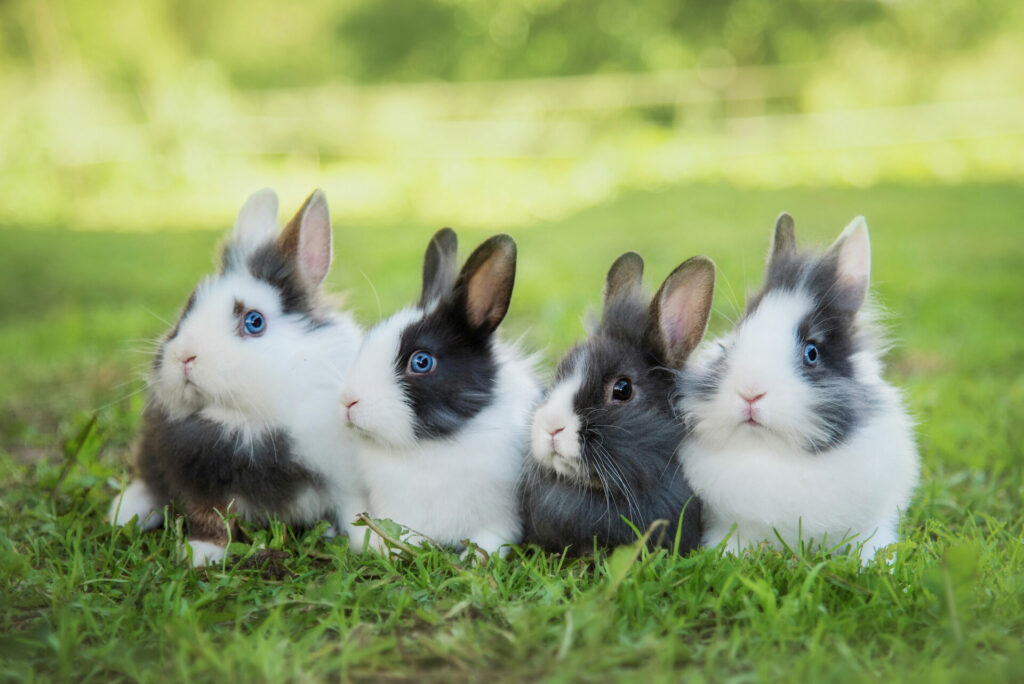
This myth is one of the most important ones to debunk since it’s crucial for rabbits to have rabbit companions. As social animals, rabbits can get lonely and become depressed without appropriate companionship.
While a bond between a human and their rabbit is brilliant, it’s no substitution for a group of rabbits. They constantly communicate through grooming, dancing, and movements.
A bonded pair or group of rabbits should be kept together at all times (e.g. if one goes to the vet, the others should go as well). The rabbits will be happier, easier to care for, and will get into less trouble – since there’s less time to be bored when you have a friend to talk to!
Though more than one rabbit will mean higher expenses, the benefits will greatly outweigh the cost. I think it’s super important to get at least two rabbits together.
Myth #4: Rabbits Don’t Need Much Space
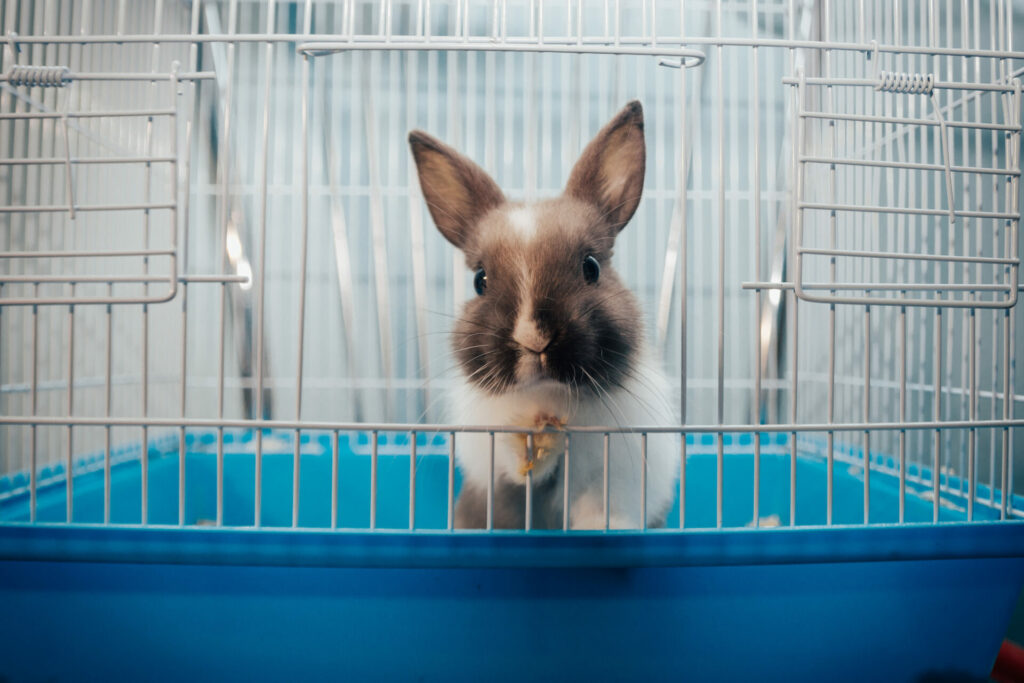
A lot of rabbits spend their entire lives in a tiny, cramped cage, seeing the same four walls.
A lot of people assume that these small animals don’t require a lot of space. This thinking is actually harmful to your rabbits, as they need space to run and stretch.
The best way to have rabbits in your home is free-roaming. This means your rabbit lives in an entire room (or even better, multiple rooms). Much like with other household pets, rabbits can be litter trained and the room can be bunny-proofed.
A rabbit will benefit significantly by having more room – it’ll drastically improve their quality of life and help prevent issues like obesity.
The PDSA charity has more information about keeping rabbits indoors that you can check out here. Think about it like this – how stir crazy would you be if you were locked in a small space at all times?
Myth #5: Rabbits Don’t Need Vet Visits
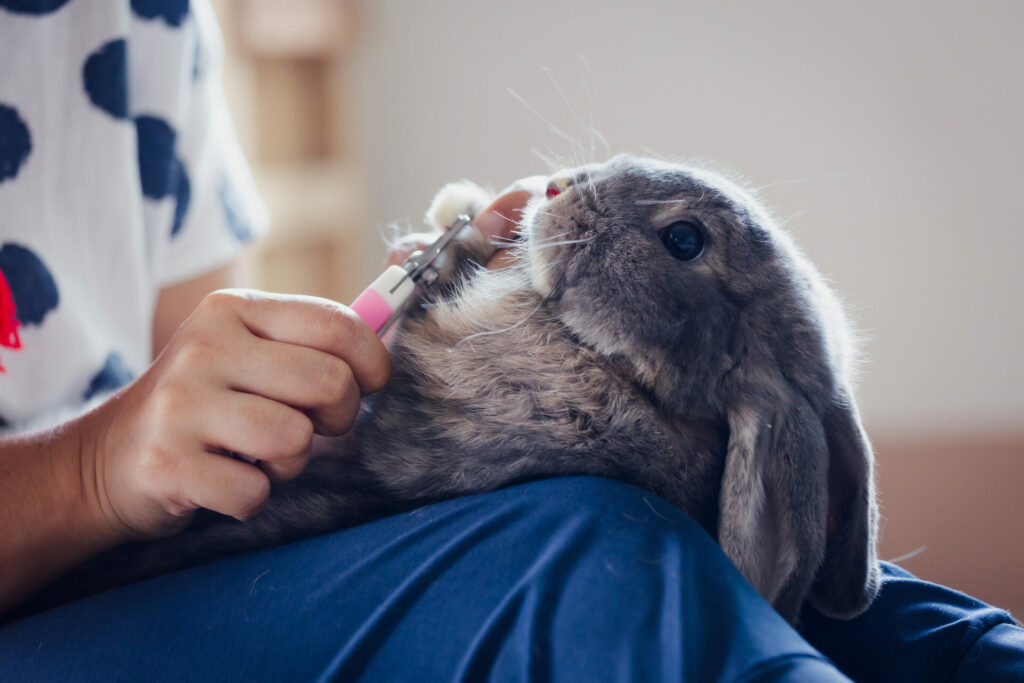
When imagining the vet, you might think of dogs or cats in the waiting room. You might be surprised to learn that there are plenty of reasons why you should be registered and regularly visit the vet with your rabbit.
Your rabbit should be getting annual vaccinations, as well as getting their first vaccinations when they’re young. Once they reach sexual maturity, they’ll also need to be neutered – both males and females need this.
Other reasons to visit the vet include if your rabbit’s nails need clipping and you can’t or don’t want to do them at home, and also if you’re concerned about their health. Regular checkups can give you peace of mind that your pet is in good health, and if the day comes when your rabbit requires urgent treatment, they’ll be on the system and more at ease if they’ve been on outings to the vet before.
Myth #6: Rabbits Don’t Need Neutering if They’re the Same Gender or Single

Some people assume rabbits should only be neutered to prevent pregnancy and ending up with hundreds of baby rabbits every year.
However, there are plenty of reasons why single and same-sex groups of rabbits should be neutered. It extends their life span, can calm down fighting and aggressiveness and will reduce territorial behavior like spraying.
You can learn more here, but the most important thing to take away from this debunked myth is the importance of rabbit neutering. Check with your local vet for prices and availability. You might need to go to an exotic vet to find a specialist vet who’s comfortable with rabbits.
Myth #7: Rabbits Eat Carrots
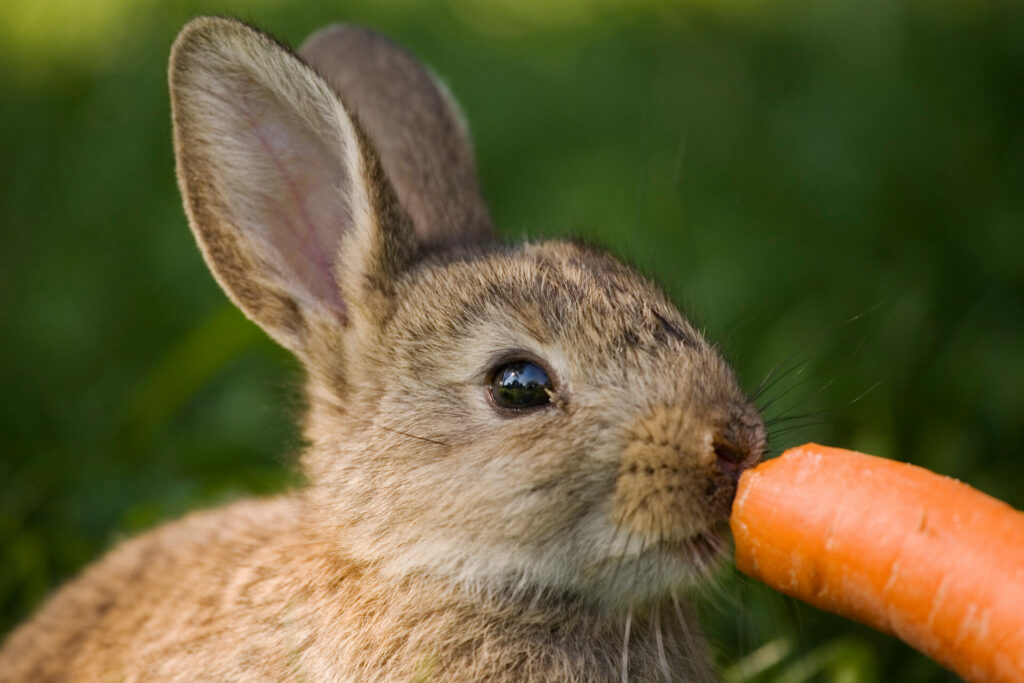
Despite being depicted this way in the media, rabbits shouldn’t eat carrots regularly. A couple of pieces of sliced, raw carrot should be an occasional treat – not a staple food.
Carrots are high in sugar, so should only be given to rabbits as a treat to avoid any related issues. Too much sugar can cause obesity, dental issues, and addiction. Eating the wrong diet long-term can have fatal consequences for rabbits, and in some cases will require emergency vet treatment (e.g. if they get gastrointestinal stasis).
To find out everything about rabbits and carrots, check out this article.
Myth #8: Rabbits Are Dirty Animals

Rabbits are actually one of the cleanest animals, they’re constantly grooming and washing themselves. If you have a bonded pair or group, you’ll regularly see them grooming each other too.
The dirty part of owning rabbits comes from their litter trays. Over just one day your rabbit can fill their cage with urine and poop, and this is the stuff that starts to smell. To keep the rabbit cage as odor-free as possible requires daily, thorough cleaning.
That being said, rabbits will often pick a spot to urinate and stick with the same place. They’re creatures of habit and can be obsessive about keeping their home tidy, which makes it easier to litter train them.
You will still need to help your rabbit by brushing them and carefully cleaning any stained or matted fur. If you keep on top of it, it’s easy to manage at home.
Myth #9: Rabbits Don’t Get Bored

The general assumption on rabbits is that they don’t get bored. This is completely untrue, rabbits can get bored from eating the same food all the time if they haven’t exercised, and from lack of stimulation.
Your rabbit needs mental stimulation including social interaction with you, but also with a variety of different toys. These don’t have to be expensive – you can DIY with some toilet roll tubes, create scavenger hunts at home, or pick up some toys from the store like balls and puzzles. Just make sure they’re rabbit-friendly!
It’s when your rabbit is bored that they’ll get into mischief, so it’s in your best interest as well as theirs to keep them busy and having fun.
Myth #10: Rabbits Can’t Be Trained
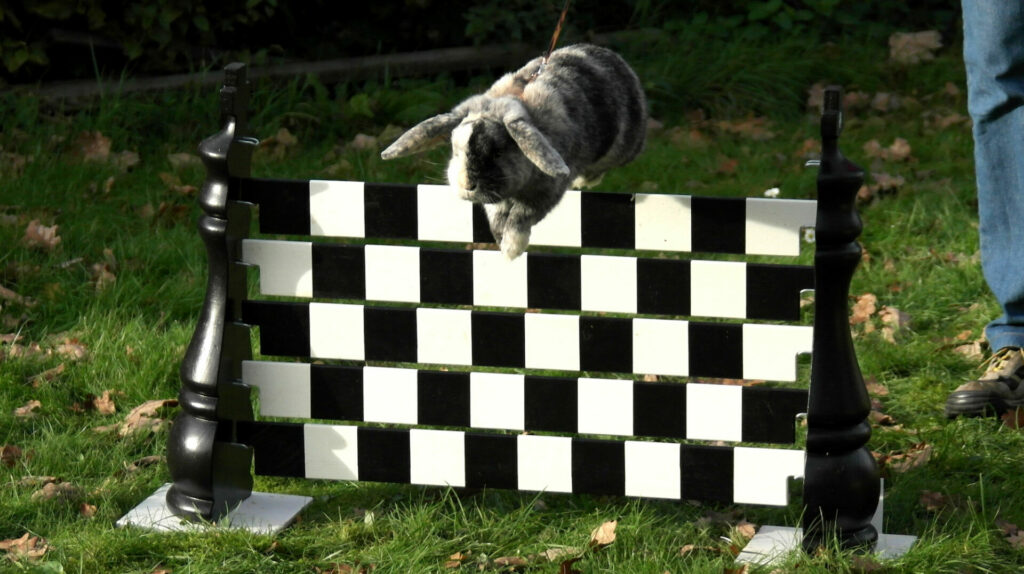
You might be surprised to learn that rabbits can be trained with just a little bit of time and effort! You can litter train them, teach them their name, and train them to sit, stand up, come to you, and more.
Using rewards and repetition is a fast way to show your rabbit what you want them to do. As quick learners, rabbits will enjoy a new challenge and in no time they’ll have a bunch of new tricks and commands under their belt.
You can start training at any age, it’s never too late! For inspiration, you can check out videos like this.
Myth #11: Rabbits Make Good Pets for Young Children
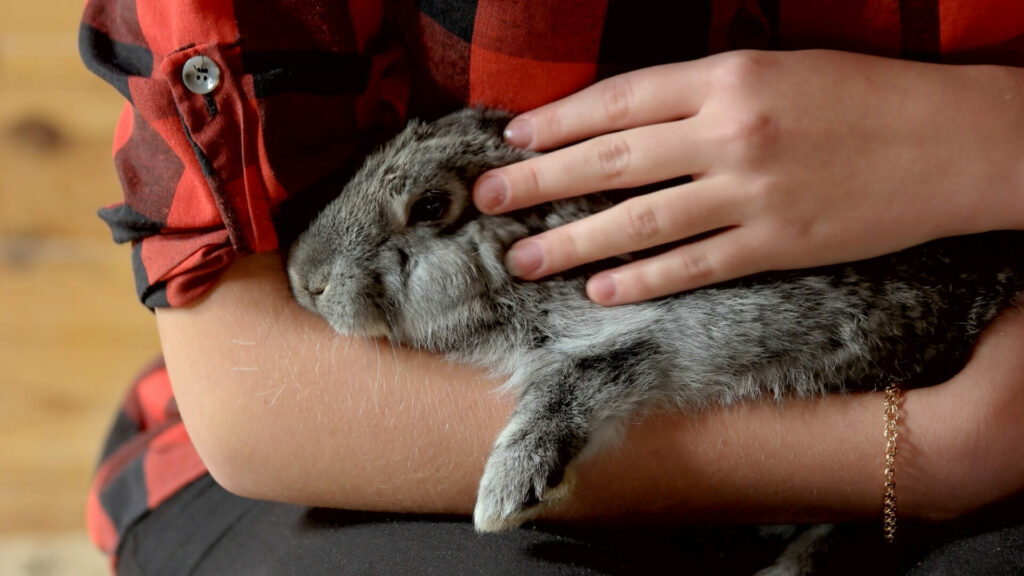
Pets are a joy for children, and a way to learn responsibility. However, rabbits do not make good pets for young children.
A young child might grab the rabbit, holding them roughly and altogether making the rabbit feel unsafe. They might also not comprehend how complex rabbits are. They can be easily offended, need a specific, constantly changing diet, and a lot of time and attention. These factors mean children probably can’t give rabbits the care they need.
Although seen as a smaller and perhaps easier option than a dog or cat, it’s not the case. You’ll either have to be willing to take on the responsibility and be prepared to give the rabbits a good life, or research into other animals.
Myth #12: Rabbits Make Great Gifts

Giving a rabbit to someone as a gift is not the cute idea it seems.
What you’re giving someone is a ten-plus-year commitment, an ongoing expense, and increasing the chances of the rabbit being given up if it wasn’t wanted.
Before anyone gets a new rabbit, they need to be doing thorough research, and make sure they’re one hundred percent on board with the commitment.
Easter is the worst time for this, with many people spontaneously buying ‘Easter Bunnies’ and later contributing to the highest levels of rabbit abandonment. Some pet shops refuse to sell rabbits over Easter weekend for this exact reason.
Myth #13: Rabbits Live Outside and Don’t Need Much Care
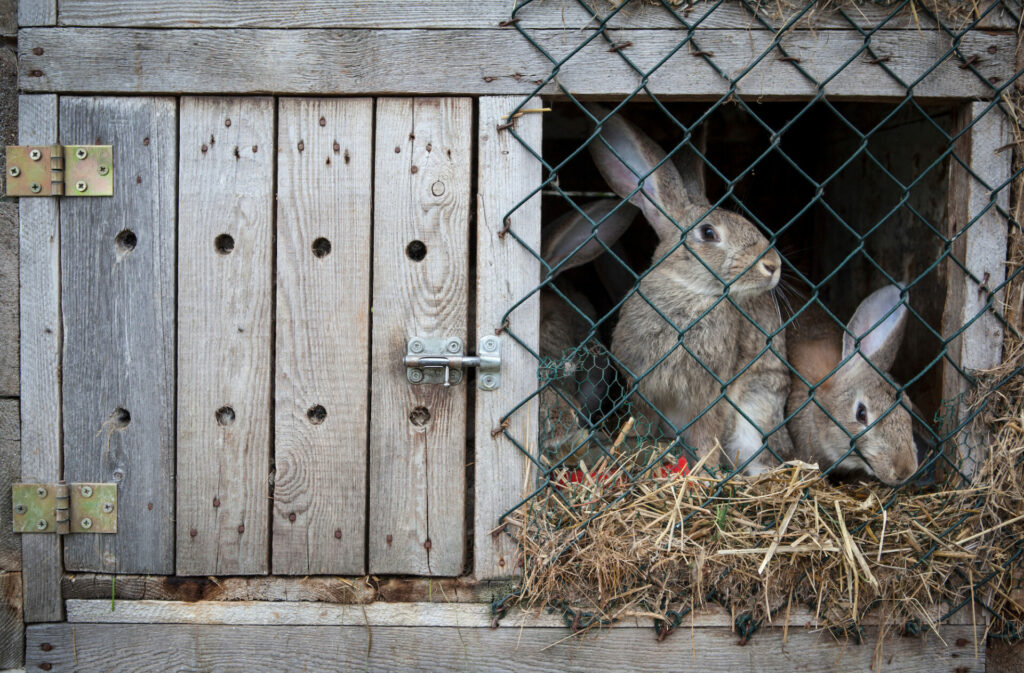
It’s all too common for rabbits to live in a hutch outside or in the shed and be forgotten about and neglected. Sure they might be fed every day and given water, but that’s just the bare minimum that they need from their owners.
It’s a personal choice whether to keep your rabbits inside your home, but consider the risks of being outside. Predators, over-heating, and freezing temperatures all make living outside a frightening and uncomfortable experience for your pets.
In the winter, when it’s harder to go outside in colder temperatures and poor weather, rabbits might get even less time and care than they already did. The best scenario for your rabbit is living in a sheltered place with a den or private space for them to have a sanctuary and access to your house if possible.
Myth #14: Rabbits Can Be Left Home Alone for a Day or Two
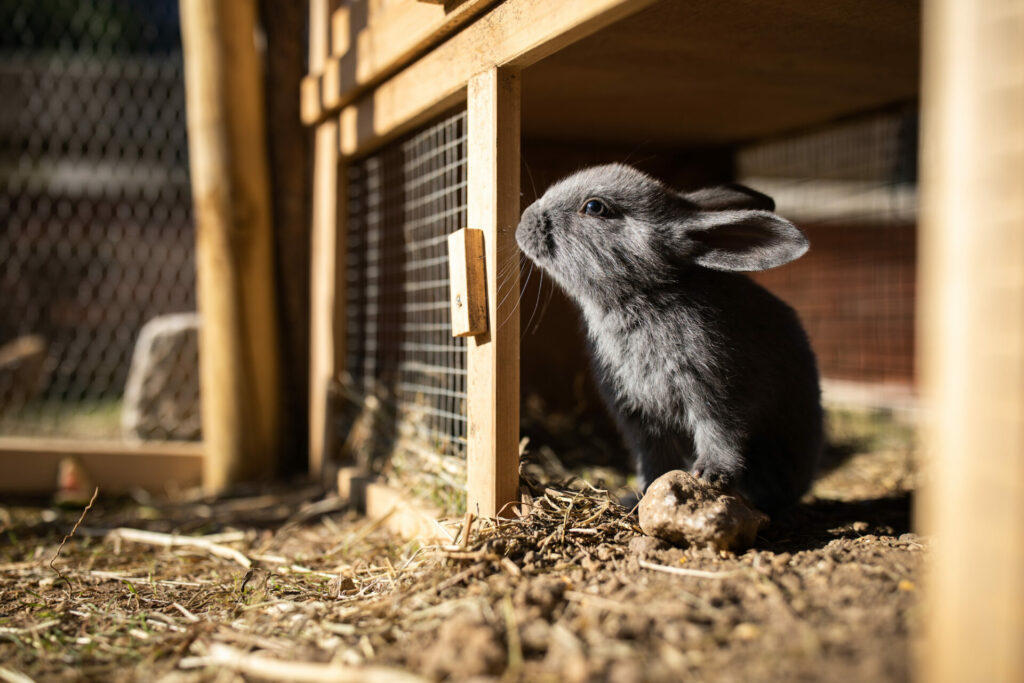
Being home alone is problematic on several levels for rabbits.
For starters, they require plenty of hay and water – which means replenishing it throughout the day. They also need a variety of fresh vegetables every day, which you need to wash and prepare.
Leaving your rabbit alone for more than a few hours will be detrimental. If they get bored or lonely, they can start causing trouble. Chewing things that shouldn’t be chewed, digging, and climbing are just a few examples of what your rabbit could get up to while unsupervised.
They also need attention and will look for you if you’re not around. Living in a pair of groups is significantly better than a single rabbit, but still not enough to completely replace their human and the need for social contact.
Even a night away can be problematic, it’s always better to get someone you trust to keep an eye on your rabbits if you can’t be there. Never leave them more than half a day by themselves.
Myth #15: You Only Get Rabbits From the Pet Store

When you think of getting a new rabbit – does your mind automatically jump to a pet store?
There are plenty of other options that you might not be aware of! The one place you should avoid above all is getting rabbits from a backyard breeder.
Reputable breeders aren’t too bad – but you should ensure that you visit them and make sure everything is above board. Check out the Humane Society’s guide on this here.
The best place you can go is an animal rescue, shelter, or charity. This way, you know you’re giving that rabbit a better life. They’ll usually have been neutered and given vet treatment. The only possible disadvantage could be if they’re older so may have a shorter time with you. But this is the same as adopting a dog or cat.
Myth #16: Rabbits Can’t Live With Dogs or Cats
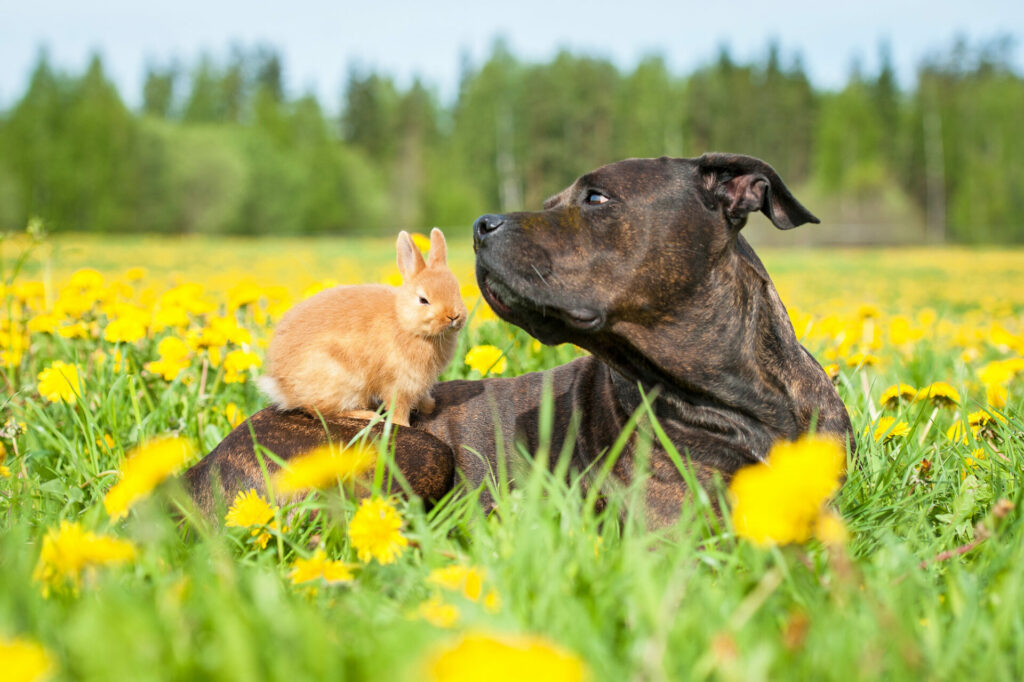
It’s important to note that you should always proceed with caution and always supervise your rabbits when they’re with your cats or dogs. Fights and accidents can happen, even with the best-behaved pets.
However, it’s very possible to have rabbits peacefully co-existing with cats and dogs. They’ll need to be introduced slowly, in a situation that you can easily control should things turn sideways.
Their natures are typically for rabbits (as prey animals) to flee from danger, and cats and dogs intrinsically chase down their prey. Certain breeds of dogs will be more disposed to this instinct than others.
Training and socializing your pets will help them build new habits and perceive each other differently, which can eventually result in the different species becoming firm friends.
Myth #17: Rabbits Can be Hypnotized
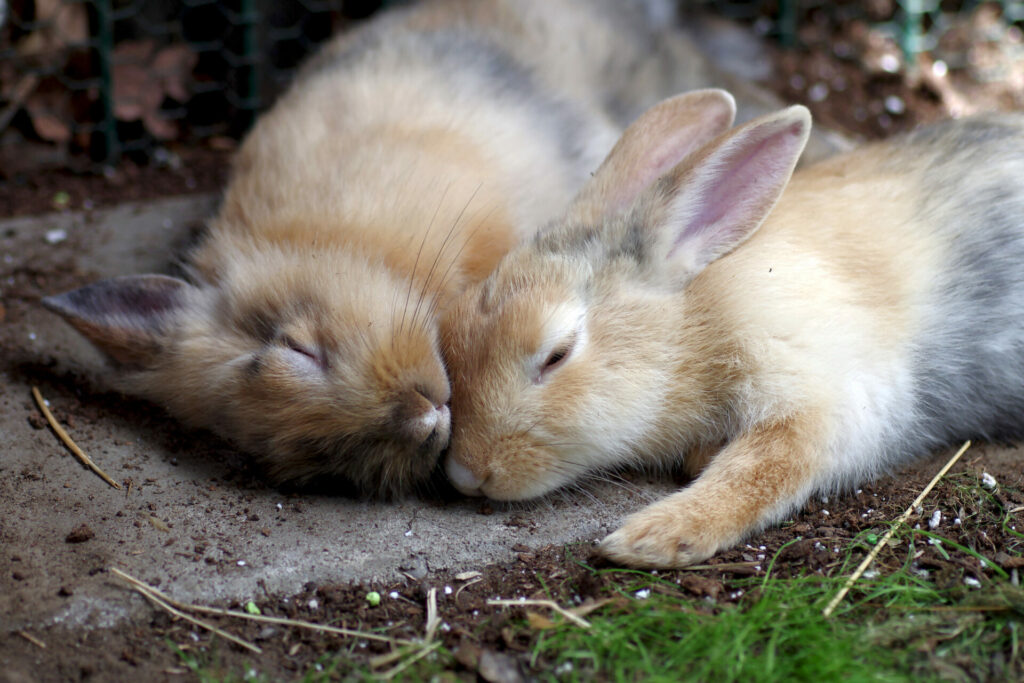
Putting rabbits on their back and stroking their legs to put them in a trance-like state was once considered common practice.
However, this is your rabbit playing dead which is a survival instinct coming from fear. You should avoid putting your rabbit in this position, for the sake of their health. Rabbits can die from fear, so it’s of utmost importance to avoid creating any situation where they might be so scared.
If you do need your rabbit to be still and calm to examine them or administer any first aid, you can ask a vet to help you if you’re concerned about your rabbit’s health, or research safer and more rabbit-friendly ways to hold your rabbit.
For further information on safely and properly holding your rabbit, you can take a look at websites like that of the PDSA charity.
Myth #18: Rabbits Don’t Make Any Noise

If you thought getting a rabbit involved a quiet, meek animal that’s so quiet that you’ll forget that they’re there, then you’re in for quite a surprise!
Rabbits can make noise themselves – thumping on the ground when they’re displeased or feel unsafe, kicking their hind legs out in annoyance, grunting, and so much more.
The loudest noise they can make is a screaming sound that’s only heard when a rabbit is in extreme pain or petrified. If you hear this, immediately assess your rabbit for injury and check the surrounding area for any danger that could have caused it. You’ll need to comfort them and help them feel safe after they scream.
Rabbits can also make noise by interacting with objects, including playing with noisy toys, biting their bowl, throwing loose items around their cage, and more. While they don’t bark or meow, they can still make quite a racket!
Myth #19: Rabbits Are Rodents

Rabbits were officially considered rodents until 1912.
But since then rabbits (and hares) are now categorized as lagomorphs – which have subtle differences from rodents.
Some key differences between the species include that lagomorphs have four incisors, a vegetarian diet, they’ll eat their droppings, and more. There are also differences in reproductive organs. These all differ in characteristics of rodents such as rats, squirrels, hamsters, guinea pigs, and mice.
Myth #20: You Can Keep Rabbits With Guinea Pigs
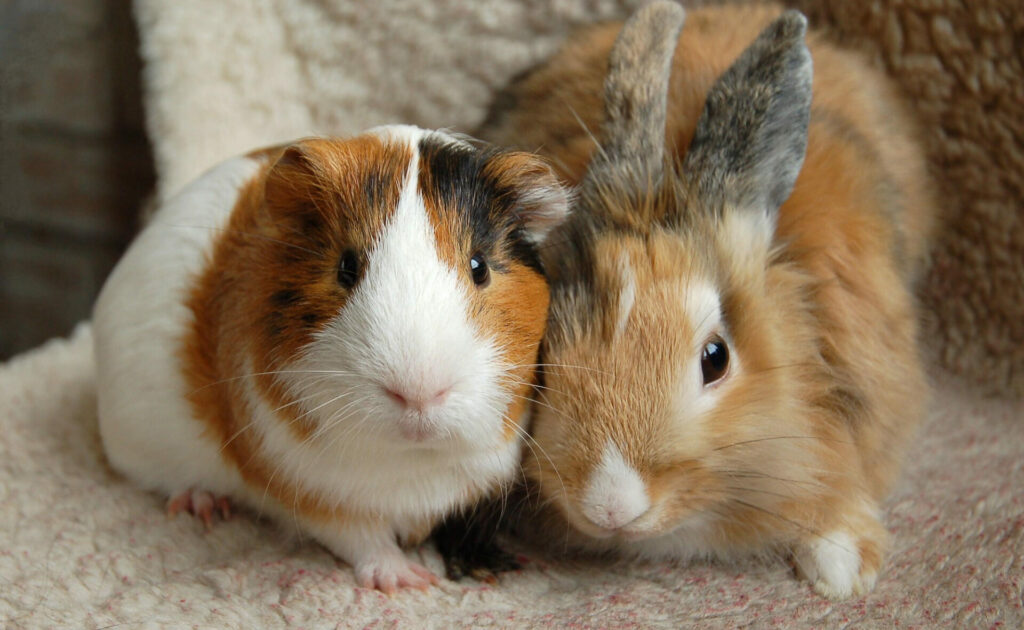
Though it is possible to put rabbits and guinea pigs together, it’s not recommended. They’re similar in size, but that’s where the similarities end.
They have entirely different diets and forms of communication. They won’t understand each other and may fight or bully each other. Diseases can also be passed between the two species, making them incompatible roommates.
If you have rabbits and guinea pigs living together now, you might be lucky and they get along just fine, but that is a rarity. The best pairings are two rabbits, and separately two guinea pigs.
Thanks for Reading!

Thanks for reading through this list of rabbit myths!
Liked this list? Or have a diet myth you want to share?
Let me know in the comments below!
